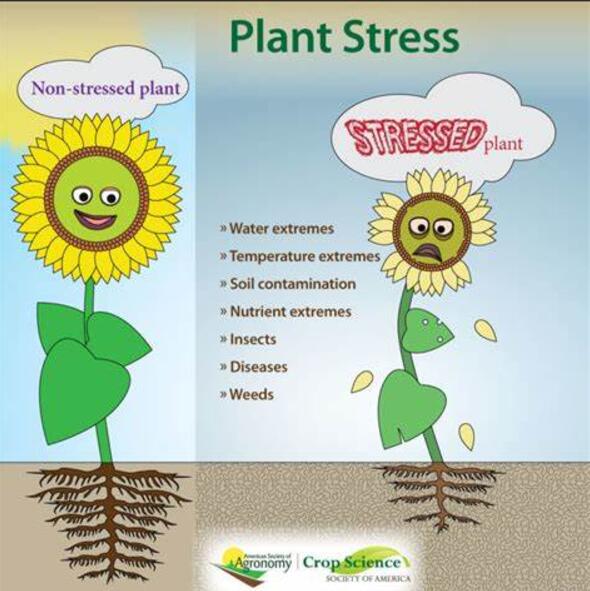The role of ASR (ABA, Stress, and Ripening) genes in responses to phosphate starvation in rice roots
IF 6.8
Q1 PLANT SCIENCES
引用次数: 0
Abstract
Phosphorus (P) is a crucial macronutrient for plant growth and development, absorbed by plant roots as inorganic phosphate, which is frequently limited in soil. Plants use only 30 % of the total phosphate fertilizers applied to increase yield. Compared to other nutrients, the understanding of the molecular mechanisms involved in phosphate homeostasis in crops, particularly in the early transcriptional responses to change the root system architecture remain underexplored. Addressing these knowledge gaps requires studies that offer insights into the role of transcription factors in response to endogenous and exogenous signals associated with the nutritional status of crops. ASR (ABA, Stress and Ripening) proteins function as molecular chaperones, transcription factors, and homeostasis sensors. They also regulate the development and response to stress in plants. Our results show that ASR genes play an important role in phosphate homeostasis in rice (Oryza sativa L.) roots. Silencing of OsASR genes (OsASR-RNAi plants) delays development of adventitious and lateral roots, and alters the expression of genes associated with root development and the response to phosphate starvation. These findings suggest that OsASR play a role in regulating root system architecture, nutrient perception and signal transduction in rice plants.
ASR (ABA, Stress, and riripe)基因在水稻根系对磷酸盐饥饿反应中的作用
磷(P)是植物生长发育的重要常量养分,以无机磷酸盐的形式被植物根系吸收,在土壤中往往受到限制。植物只使用总磷肥的30%来增加产量。与其他营养物质相比,对作物中磷酸盐稳态的分子机制,特别是对改变根系结构的早期转录反应的理解仍未得到充分探索。要解决这些知识空白,需要开展研究,深入了解转录因子在响应与作物营养状况相关的内源和外源信号中的作用。ASR (ABA,应激和成熟)蛋白具有分子伴侣、转录因子和稳态传感器的功能。它们还调节植物的发育和对胁迫的反应。本研究结果表明,ASR基因在水稻根系磷素稳态中起重要作用。OsASR基因(OsASR- rnai植物)的沉默延迟了不定根和侧根的发育,并改变了与根发育和对磷酸盐饥饿反应相关的基因的表达。这些结果表明,OsASR在水稻根系结构、养分感知和信号转导等方面发挥调控作用。
本文章由计算机程序翻译,如有差异,请以英文原文为准。
求助全文
约1分钟内获得全文
求助全文
来源期刊

Plant Stress
PLANT SCIENCES-
CiteScore
5.20
自引率
8.00%
发文量
76
审稿时长
63 days
期刊介绍:
The journal Plant Stress deals with plant (or other photoautotrophs, such as algae, cyanobacteria and lichens) responses to abiotic and biotic stress factors that can result in limited growth and productivity. Such responses can be analyzed and described at a physiological, biochemical and molecular level. Experimental approaches/technologies aiming to improve growth and productivity with a potential for downstream validation under stress conditions will also be considered. Both fundamental and applied research manuscripts are welcome, provided that clear mechanistic hypotheses are made and descriptive approaches are avoided. In addition, high-quality review articles will also be considered, provided they follow a critical approach and stimulate thought for future research avenues.
Plant Stress welcomes high-quality manuscripts related (but not limited) to interactions between plants and:
Lack of water (drought) and excess (flooding),
Salinity stress,
Elevated temperature and/or low temperature (chilling and freezing),
Hypoxia and/or anoxia,
Mineral nutrient excess and/or deficiency,
Heavy metals and/or metalloids,
Plant priming (chemical, biological, physiological, nanomaterial, biostimulant) approaches for improved stress protection,
Viral, phytoplasma, bacterial and fungal plant-pathogen interactions.
The journal welcomes basic and applied research articles, as well as review articles and short communications. All submitted manuscripts will be subject to a thorough peer-reviewing process.
 求助内容:
求助内容: 应助结果提醒方式:
应助结果提醒方式:


